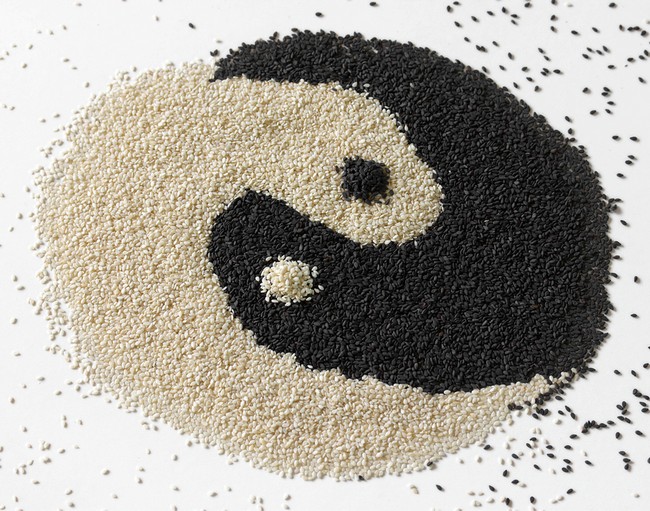- Make It Yourself Lavender Heart-Shaped Bath Bombs!
- 20 Things You Never Knew About “Down There”
- 12 Best Foods For Those Suffering From Arthritis Pain
- 12 Personal Hygiene Mistakes Almost Everyone Makes (Mom Never Told You About #4!)
- 15 Medicinal Plants And Herbs From The Cherokee People
- 12 Mind-Blowing Benefits Of Drinking Coconut Water During Pregnancy
- 12 Outstanding Winter Foods That Won’t Fatten You Up Like A Christmas Turkey
10 Outstanding All Natural Sources of Calcium for Healthy Bones

Photo credit: bigstock
Calcium is a vital macro mineral that is vital to the body as it strengthens bones and teeth, improves alkalinity within the body, and helps our heart muscles to work properly, relaxing and contracting.
Like all minerals, calcium does not work alone, but works together in tandem with other nutrients such as magnesium and vitamin D, This means that when we obtain calcium from whole foods, natural foods with nutrient profiles that have been optimized by Mother Nature for their superior absorption levels, we have bodies that are naturally health and strong.
What are the most outstanding non-dairy sources of calcium? We have a list of the top 10, and you can read all about it right here:
1. Seaweed
Ok, so seaweed is included in multiple “best of” lists and that’s because, well, let’s be honest, it’s got the best of just about anything you are looking for. Since seaweed grows on the ocean floor, it is unaffected by contaminants in the soil or air, so its nutritional value has remained the same for centuries. As luck would have it, seaweed is super rich in calcium.
Of course, besides calcium, seaweed has 13 vitamins, 60 trace elements, 20 amino acids, zip in the way of calories, super low in fat, and, of course, it has protein and calcium. It’s hard to find anything else that can match that line up of nutrition.
The best sources of seaweed for calcium would be kombu, wakame, and kelp. Just one hundred grams have about 150 to 170 grams of calcium. As of this writing, it might be a good idea to avoid seaweed that has been harvested from the Pacific Ocean due to possible radiation contamination.

Photo credit: bigstock
2. Chia Seeds
Ch-ch-ch-CHIA! You might first think of those little green covered terra cotta heads when you first think of chia but these tiny little black seeds are one of the best sources of calcium you can find.
Chia seeds originate from a little flowering plant that’s related to the mint family and is native to Mexico and Guatemala. History says it was a very important food crop for the Aztecs, but was virtually unknown in North America until about 30 years ago. Just one serving of chia seeds has 18 percent of your daily recommended intake of calcium, which puts you well on your way towards avoiding osteoporosis. One ounce will get you to that 18 percent level, but since these seeds are so tiny, not to mention tasty, it’s easy to consume more than an ounce. Try putting an ounce in your morning smoothie or oatmeal, and sprinkle another ounce over your salad or soup. There are also several recipes for chia seed pudding that would make a perfect afternoon snack. Read more about smoothies with chia seeds.
So stock up on these little black beauties and get your calcium without even trying.
3. Sesame Seeds
More seeds to the calcium rescue! These nutty little seeds belong to one of the oldest oilseed crops known to man. One little tablespoon supplies your body with 88mgs of calcium. Sesame seeds, like chia seeds, are super versatile and can be eaten as a snack, sprinkled over your salad, or added to almost any dish you can think of.
These seeds might be the oldest condiment man has used. They are valued for their oil which is highly resistant to becoming rancid and can add a nutty, yet delicate taste and crunch to man dishes. They are, of course, the main ingredient in tahini (sesame seed paste) and the sweet treat from the Middle East called halvah.
You might find that there has been a bit of controversy surrounding the amount of calcium in sesame seeds. This is due to the vast difference between the calcium content of hulled and whole sesame seeds. When the seeds are whole, that is to say, without their hull, they have 88 mgs of calcium in one tablespoon. When the seeds are hulled, however, that same tablespoon has only about 37mgs. Tahini is made from hulled seeds so it will have lower amounts of calcium than sesame butter since it’s usually made from whole sesame seeds, hulls included.
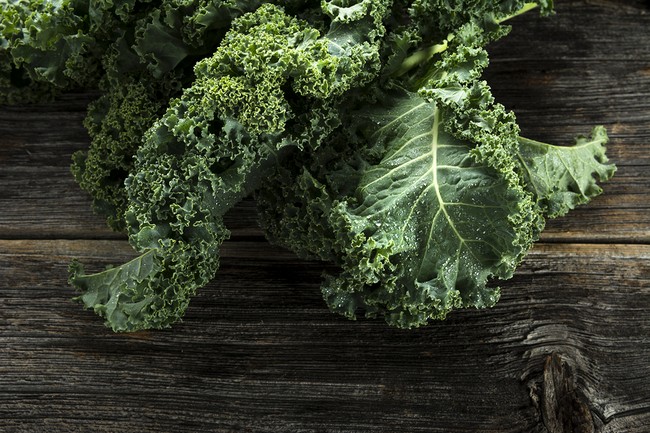
Photo credit: bigstock
4. Dark Leafy Greens
Unfortunately, due to the erosion of our soil, most green veggies, the ones we once considered to be our finest sources of calcium, are now just shadows of their former nutritional selves. The good news is that some greens still have some of the nutritional value.
- Kale – 188mg in 2 cups of raw, chopped kale. This truly is a super food that is filled with antioxidants and calcium. It’s perfect to use as a base for your salads when torn into thin strips. A salad with kale, apricots, and avocados is a great calcium choice.
- Bok Choy – 74mg in 1 cup of raw, chopped bok choy. This super versatile Chinese cabbage provides huge doses of vitamin A, vitamin C, along with fiber and calcium (find out more bok choy benefits). Try stir frying bok choy or adding it to your stir fry dish, salad, or even soups.
- Turnip Greens – 197mg in 1 cup of cooked, chopped greens. This dark leafy green comes from turnip bulbs and is simply loaded with antioxidants, folates, and calcium. Sautee them in a side dish with a bit of garlic and olive oil, or add some to your favorite salad to help boost the calcium level.

Photo credit: bigstock
5. White Beans
Lighter than most beans, with a creamy, mild flavor, these legumes are another great source of calcium and iron. 1 cup of canned beans has 191mg of calcium. Although many common types of beans are high in calcium, white beans happen to be one of the best.
Besides calcium, iron, and phosphorus, white beans are also loaded with fiber. Almost 4 grams in just half a cup of cooked beans. This means that besides being good for your bones, white beans are good for your digestive system, your colon, and might even help you to lose weight.
White, or even off white beans will grow in a variety of climates. They are commonly found throughout Central and South America but also grow well in North America, even some parts of Northern Canada.
If you find beans are the magical fruit that make you “toot”, try adding them to your diet slowly until your body becomes more accustomed to them.
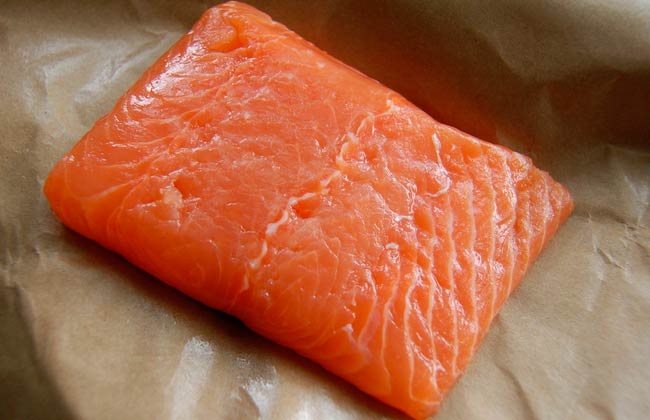
Photo credit: bigstock
6. Canned Salmon
This is a great way to add calcium to your diet without breaking the bank. Canned salmon can have 232 mg of calcium in just ½ a can, including the bones. (It’s the bones that provides that calcium so be sure to eat them) Canned salmon is perhaps one of the most calcium rich, non-dairy foods available. Don’t get bent out of shape thinking about crunching bones. The process of canning softens the bones so they break apart easily and are virtually unnoticeable when mixed in the contents from the entire can. It’s the delicate, very edible bones in canned Alaskan salmon that are easily digested and rich in both magnesium and calcium.
Canned salmon is a super-rich source of vitamin D also, a vitamin that isn’t often present in most diets unless it’s eaten through dairy products. Vitamin D is essential for bone health since it helps the body to increase the absorption of calcium. Salmon is also a good source of phosphorus, a mineral that is important for strengthening the matrix of the bone.
Try cooking up some salmon cakes for dinner for a change and boost your bone health at the same time.
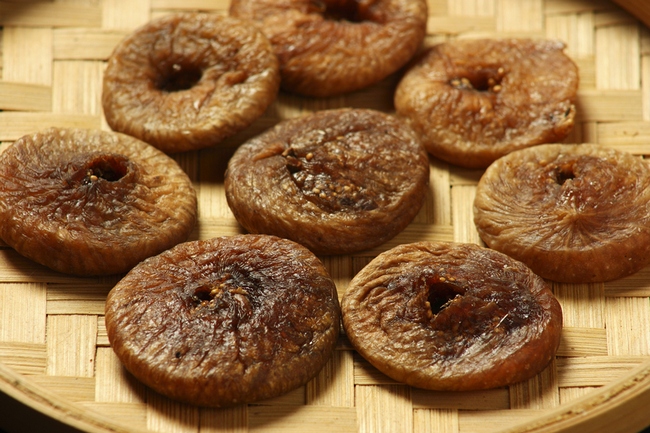
Photo credit: bigstock
7. Dried Figs
Now this is a sweet way to get your calcium intake. Dried figs carry a big antioxidant, fiber, and calcium punch. These are great as a snack or you can even turn them into a sweet, creamy jam. About 8 dried figs have 107mgs of calcium. That’s 10 percent of your daily recommended requirement, all in a tasty, fruity little snack.
Commercially dried figs are sometimes treated with sulfur dioxide gas or sulfites during processing in order to extend their shelf life. Some people have allergic reactions or sensitivities to sulfites so try to find figs that have been dried without these compounds. Generally dried figs that state they are organic have not been dried or cured with sulfites. The majority of organic figs are dried through exposure to sunlight, much like raisins, or through heat drying in ovens.
Dried figs are generally available throughout the year, but there is something to be said for the unique taste of fresh figs.

Photo credit: bigstock
8. Blackstrap Molasses
This type of molasses is the dark byproduct of the refinement of sugar cane. Since this comes directly from the sugar cane plant, with roots that grow very deep in the soil, it has a number of nutrients that are not generally found in other plants, especially calcium. Just one tablespoon of this type of molasses has 123mgs of calcium, about 12 percent of your daily requirement. Blackstrap molasses is also a good source of selenium, magnesium, and manganese.
When your sweet tooth is aching, it’s best to go as natural as possible. Although you will find that blackstrap molasses is darker in color than regular molasses, it’s also richer and deeper in flavor. It’s filled with iron, vitamins, minerals, and calcium. This is a healthy way to take care of that sweet tooth while getting some nutrients at the same time. Try drizzling some on your pancakes, or, for a real change of pace, add some to your morning coffee.
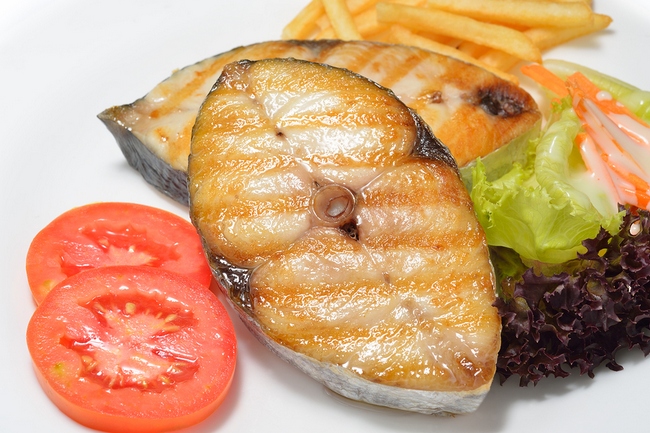
Photo credit: bigstock
9. Sardines
Nothing fishy about sardines! Not when we are talking about calcium, anyway. These are super healthy option when you are looking for something to munch on. Besides being loaded with calcium, they will also provide you with healthy doses of vitamin D and those great omega-3 fatty acids. You can eat them straight out of the can, or add them to soups, salads, even homemade pizza.
Sardines are well known to be rich in the nutrients that, besides supporting bone health, are also heart healthy. Those omega -3 fatty acids, for example, EPA and DHA, which lower your cholesterol and triglyceride levels. They also contain high levels of vitamin B12, which protects your artery walls from damage from homocysteine.
SEE ALSO: The 5 Warning Signs of Magnesium Deficiency
Sardines are a super delicious, super healthy way to get your vitamin D, omega-3’s, and calcium all in one little silver fish. You can’t ask for more than that! Stock up on some sardines and enjoy!

Photo credit: bigstock
10. Almonds
You must be “nuts” if you don’t grab a handful of these crunchy healthy taste treats every now and then. Although you probably don’t think of nuts as a good source of calcium, almonds are an exception. Just 20 nuts have about 72mg, or 7 percent of your daily recommended intake. Besides calcium, almonds are one of the most nutritionally dense foods you can eat. Ounce for ounce they pack an amazing amount of healthy goodness including iron, potassium, biotin, copper, vitamin D2, phosphorus, magnesium, and vitamin E just to name a few. They do contain fat so you want to watch your daily portions, but a couple of handfuls a day is all it take! Add some to your salad, or make your own, super delicious, and super healthy, almond butter for lunchtime sandwiches or spread it on an apple. You can also add some almonds to your yogurt or add some to your summer cold rice salad for a nice change from hot meals.
(By the way, if you’re enjoying this article, you may want to subscribe to the Naturalon’s free newsletter; get breaking news alerts on GMO’s, fluoride, superfoods, natural cures and more… You privacy is protected. Unsubscribe at any time.)

